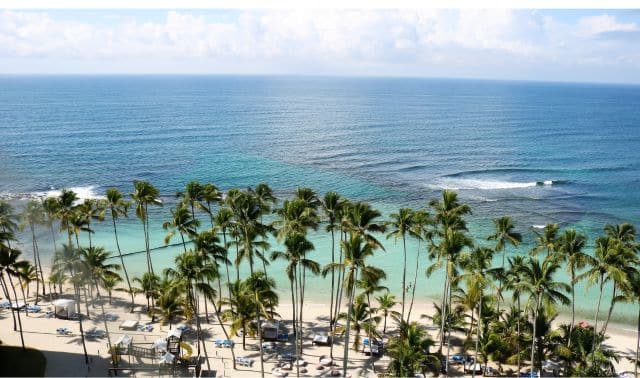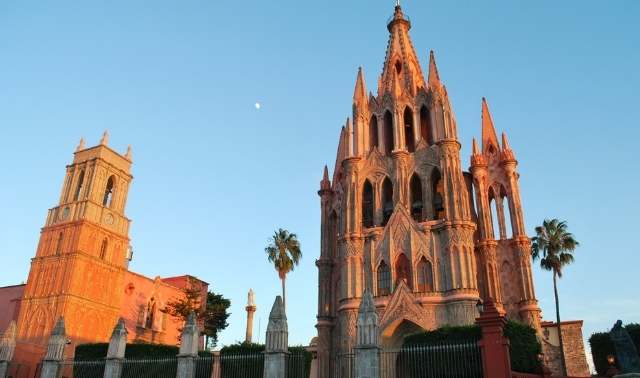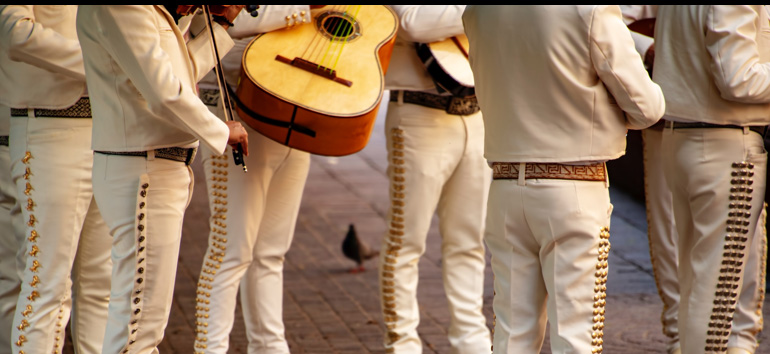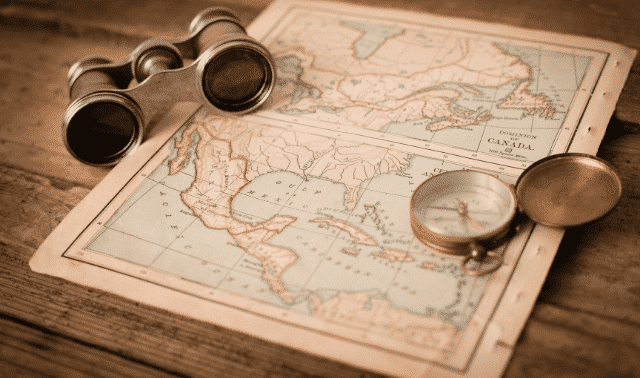Sign up for the Family Tree Newsletter! Plus, you’ll receive our 10 Essential Genealogy Research Forms PDF as a special thank you.
Get Your Free Genealogy Forms
"*" indicates required fields

1. FamilySearch
It’s probably no surprise that FamilySearch, the organization with the world’s largest collection of genealogical material, kicks off our list. It actually offers two resources rolled into one.
FamilySearch Research Wiki
The sometimes-overlooked FamilySearch Research Wiki is a great starting point when research takes you to an unfamiliar place. How-to information here is primarily user-submitted, so the content on its pages varies. From the wiki homepage, type a country into the search box, or select List All Countries to see an alphabetical list. Country pages may contain historical background, information about administrative divisions and important record groups, details about related records on microfilm at the FHL in Salt Lake City and digitized at FamilySearch, and links to other websites and databases. The Mexico page boasts a particularly exceptional research guide (look under the Research Tools subhead).
FamilySearch Online Records
The superstar of FamilySearch is its online historical records collection. It includes digitized records for 14 Latin American and Caribbean countries: Bahamas, Barbados, Costa Rica, Dominican Republic, Ecuador, El Salvador, Grenada, Guatemala, Honduras, Jamaica, Mexico, Panama, Puerto Rico and the US Virgin Islands. From the FamilySearch home page, scroll down and click on the Caribbean, Central and South America link to see an alphabetical list of available records from this region.
The best-represented Latin American country is Mexico, with civil registration (birth, marriage and death) and church records for most Mexican states, as well as the 1930 Mexican census. Records for other countries vary in content and completeness, but include primarily civil registrations and church records. Many of the collections are indexed and searchable by name (you can browse unindexed collections by date, state, parish or other subdivision, depending how the records are organized). Remember when conducting your search that most records are in Spanish, so try spelling variations if you can’t find a record you think should be there. Also keep in mind that Spanish double-surnames may be indexed in a way you wouldn’t expect, so try different combinations in the First Names and Last Names boxes.
2. Cuba Gen Web
Search for military records from the Cuban War of Independence (1895 to 1898) and the 10 Years War (1868 to 1878), passenger lists (mainly from the 1800s) and Santiago marriages (1670 to 1799). These search forms can be tricky to navigate. When you click the Search Form button for any of the databases, a giant grid appears. You then can click on a box and type in the appropriate term. You also can browse cemetery transcriptions and a glossary of Spanish genealogy terms.
3. Genealogy of Mexico
At first glance this site can seem overwhelming, but buried under its bright exterior, you’ll find lists of early settlers and explorers from the 16th, 17th and 18th centuries, and resources for researching your surname. Once you click on a button, scroll down to browse the transcriptions.
4. Hispanic Genealogy Centre
The Hispanic Genealogical Society of New York’s compendium of links (click Resources) connects you with primarily Puerto Rican resources.
5. Hispanic Heritage on Gale.com
A fun, free resource, Gale provides tools for studying important Hispanic individuals and historical events. Online biographies of well-known Hispanics include writer Isabel Allende, artist Frida Kahlo and boxing champ Oscar de la Hoya. A timeline covers events from Spaniards landing at the present-day Bahamas in 1492, to Cuban-born playwright Nilo Cruz winning the 2003 Pulitzer Prize for drama.
6. Somos Primos
Beneath the deceptively simple front page lies a wealth of information on Spanish language heritage and history in the United States. The website shares its name with the site’s now-defunct monthly publication. All 240 issues are archived and easily accessible for free here.
Just scroll to the bottom of the front page to select individual issues by clicking on the year and month. To search all 12 years at once, click on Search all Somos Primos Issues and enter the person, place or thing you want to find. The results come from the newsletters as well as other resources on the site.
7. Benson Latin American Collection
The Nettie Lee Benson Latin American Collection at the University of Texas at Austin specializes in Latin American materials, largely relating to Mexico and Central America but also from the Caribbean. The collection includes more than 970,000 books, periodicals, pamphlets and microforms, and 4,000 linear feet of manuscripts. If you’re handy to the big state of Texas, you’ll want to plan a visit here. The Benson Library is home to the Bexar Archives, which the Texas State Historical Association calls “the single most important source for the history of Hispanic Texas up to 1836.”
Held at the connected Briscoe Center for American History, the Bexar Archives documents early life in Texas, dating to the founding of the presidio of San Antonio de Béxar in 1718.
Other noteworthy Benson collections documenting Texas families with Hispanic heritage include the “Marriage, death and burial registers of San Fernando Parish Church, 1703-1860,” and the Nacogdoches Archives.
Even if you can’t go in person, there’s plenty else to explore online. First click on Rare Books and Archives, where you’ll find links to the online catalog and finding aids for the manuscript collection. For a gateway to the wealth of materials on history, genealogy and more, click on Latin American Studies on the Benson collection home page. In the History section, check out finding aids for the library’s Latin American, Mexican and Mexican/Latino-American manuscripts, as well as a general guide to major microform collections.
8. La Guía de Información Genealógica and Manual de Genealogía
We’ve grouped two similar portal websites, though each has unique strengths. La Guía de Información Genealógica (Genealogical Information Guide) is a Spanish-language site, so you’ll need your translation tools if you don’t read Spanish. Primarily focused on Central and South America, Guía contains particularly useful links for genealogists interested in Costa Rica, Cuba, Dominican Republic, Haiti and Puerto Rico. It also offers one of the more complete resource lists for Panama. Bonus: Because it’s a new site, most of the links to other sites are functional.
For the above-named countries, you’ll find information on major government record centers and libraries, plus links to research guides, easy-to-digest history and genealogy societies. The Pandora’s Box section has excellent articles dealing with Catholic church records and the canonical laws that governed them. Need a well-organized history of Spanish possession and Latin American independence? Visit the Portal del Bicentenario de las Independencias Iberoamericanas in Guía’s Miscellaneous section of the site.
Manual de Genealogia is similar to the Guía website and also arranges resources by location and topic. While some of the two websites’ resources overlap, this site’s strength is its links to family pages and blogs.
9. Map Websites
One obstacle you may encounter as you venture into new research places is not knowing the geography. Every smart traveler carries a good map. Let OldMapsOnline find the map you need for your virtual genealogical travels. This UK-based site pulls old maps from sites around the internet, including the David Rumsey Historical Map Collection, the archived Perry-Castañeda Library Map Collection and elsewhere, and makes them searchable in one place.
Search geographically by clicking on a map, or type a place name in the search box. For either search method, you can use an adjustable timeline to limit your results by date. Looking for a map of Mexico between 1690 and 1715? Not a problem: Just drag the start and end years on the timeline, type Mexico into the search box, and you’ll discover a number of maps to choose from. Click the link to the map you’d like to see, and you’ll go directly to the map on the site that hosts it.
10. State Libraries and Archives Records
As you might imagine, the state archives and libraries of many Southwestern states and Florida contain extensive holdings of interest to Latino and Caribbean researchers, including early Spanish land grants, colonial censuses, mission records and more. Be sure to investigate the state archives and libraries for the places your Hispanic and Latino ancestors lived. It may or may not take a lot of browsing to learn what materials might help with your search. In addition to searching the holdings catalog, look for a genealogy link and resource guides to early or Hispanic residents. For example, the California State Library offers numerous PDF guides to California history, including Genealogy Resources by Date which lists the book Spanish-Mexican Families of Early California, 1769-1850, by Marie E. Northrup. The Online Archive of California catalogs manuscript collections, such as the one titled Spanish and Mexican Materials, 1781-1882, that are housed at the state library and other institutions. Even if you can’t pay a visit, you might be able to borrow materials through interlibrary loan, request a photocopy, or pay for a staff or local researcher to find the records you need. Here are some libraries and archives that would be good places to start.
- Arizona Historical Society
- Arizona State Library, Archives and Public Records
- California State Archives
- California State Library
- Florida Memory
- New Mexico State Library
- Texas State Library and Archives Commission
11. College and University Records Collections
We’ve already mentioned the University of Texas Libraries specifically, but many colleges and universities have notable special collections with Hispanic and Latino genealogical materials. Below are some of the largest collections, but this isn’t an all-inclusive list:
- Florida International University Libraries Latin American and Caribbean Studies
- Tulane University, The Latin American Library
- University of New Mexico Center For Southwest Research
- University of South Florida Libraries Florida Studies Collections
If you want to learn how to research Spanish and Mexican land grants for ancestors in New Mexico, for example, check out the Land Grants in New Mexico guide at the University of New Mexico Center for Southwest Research.
Got California kin who might’ve had land grants? See Berkeley’s Bancroft Library finding aids for the Maps of Private Land Grant Cases of California and Documents Pertaining to the Adjudication of Private Land Claims in California. These rich sources are just two places to pan for genealogical gold. Explore the websites of libraries especially across the Southwest and in Florida, as well as places such as New York City where many Latino immigrants have settled.
Every journey starts at home. Knowing your ancestor’s place of origin as specifically as possible is the biggest key to researching Latino and Caribbean roots. Talk to relatives. Inquire about family papers and artifacts—anything that might help pinpoint a location. The next step is an exhaustive search of US records. Look for death certificates, naturalization records, passport applications, newspapers, marriage certificates and any other source that might reveal details on your ancestor’s life in the “old country.” Once you have an idea where you need to go, the records, resources and gateways we’ve listed will open the doors and start you on your journey of Latinx or Caribbean discovery. ¡Buen viaje!
Summaries written by Dana Schmidt and Chris Staats.
Summaries contained in this article appeared in the October 2006 and October/November 2012 issues of Family Tree Magazine. Last Updated May 2024.




